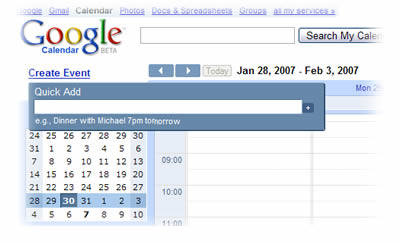Last year I wrote about Early Learning Centre and how impressed I was with their revamped web site. It was recently picked up by About Customer Relations: The New Competitive Edge. Whilst I stand by my comments about the site itself being well designed, the rest of the experience leaves a lot to be desired.
In the summer I bought a product on their website – the product that was delivered was not the same that was ordered. They succeeded in repeating the mistake twice, delivering two toy pushchairs before the pram finally arrived. With no present arriving on time we had to postpone our daughter’s birthday for a day whilst we waited for her birthday present to arrive.
I probably should have learnt from this experience. I didn’t and on 11th December I ordered toys on their website for my daughters and their cousins. The on-line shopping experience was faultless, I received a confirmatory email and the following day, on the 12th I received the following note:
We’re pleased to let you know that the following items from your order of 11 December 2006 have been despatched from the Early Learning Centre warehouse… You can expect your toys by Wednesday 20th December.
That was great, managing my expectations, keeping me informed. Only on Thursday 21st December no delivery arrived at my address. We rang their number and were informed that the delivery would be made, the order would be with us by Christmas. That was a promise.
Friday 22nd and still nothing. I was getting worried, I could postpone my daughter’s birthday, but postponing Christmas because of ELC’s incompetence was not on the cards. I got through to the call centre and was told that sorry, the delivery had not left the couriers warehouse, and would not go out before Christmas. The call centre representative said he’d phone local stores and see if the toys I’d ordered would be available for pick-up. I was put on hold as he rang a local store. All sold out. I suggested another store and was put on hold again. After fifteen minutes on hold I gave up and rang back. This time I was told that the courier firm would be making deliveries on the Saturday morning and I could expect my order to arrive first thing in time for Christmas.
Saturday morning and no delivery. I rang the call centre again. The representative I spoke to said that she couldn’t tell me whether the delivery would be made. I put the phone down. I rang back again and asked to speak to a manager. “Sorry, all our managers are in a meeting” came the response. This was not good enough. I asked for a manager to ring me back when they came out of the meeting. I’m still waiting for a call.
A little later on, the parcel arrived, in time for Christmas, but not in time for me to have anything good to say about ELC’s ability to execute on their web promise.
Central to my experience was a breakdown in communication. The call centre had access to the courier firm’s tracking website (that they wouldn’t share with me), but seemed to have no way to talk to someone on the ground to find out why my gifts were not put on a van before the date they’d promised in the email. I don’t care that the courier company let them down. For me, the courier is ELC. In the call centre it was clear that they’d brought in extra people to handle the Christmas rush. These people probably had a bare minimum of training and were not able to handle queries from disgruntled customers in a consistent way.
The lesson learned here is that having a good website is just part of the total customer experience. You may have the right products at the right price, easily found and simply paid for. My web experience may end with me parting with my credit card details and receiving a confirmation e-mail. But I’m not satisfied until the right goods arrive at my home and they meet my expectations based upon promises made on the website. At any stage of the whole process I expect a consistent and excellent experience. Anything less and I won’t return. Worse, I’ll tell others how bad my experience was.



